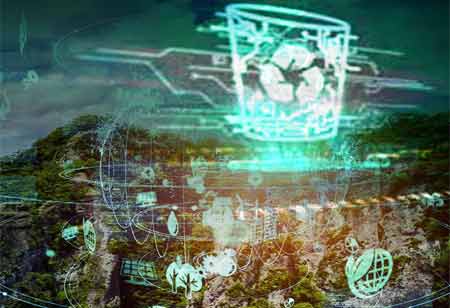Thank you for Subscribing to Agri Business Review Weekly Brief
Machine Learning To Enable More Accurate Forecasting And Planning
The recent worldwide pandemic has emphasized the essential nature of food and supply chain security

By
Agri Business Review | Wednesday, March 10, 2021
Stay ahead of the industry with exclusive feature stories on the top companies, expert insights and the latest news delivered straight to your inbox. Subscribe today.
By enhancing demand forecasting and increasing production, AI has the potential to improve the supply chain and agriculture industry.
FREMONT, CA: The recent worldwide pandemic has emphasized the essential nature of food and supply chain security. What people may have previously considered being infinite' might rapidly become critically scarce in terms of availability when supply lines are disrupted. Fortunately, machine learning (ML) and artificial intelligence (AI) are displacing inefficient planning and forecasting techniques with more intelligent ones. By making projections more adaptive, AI can alleviate concerns about food supplies. One of the fundamental issues facing any supply chain is forecasting future demand for a product. For instance, if it takes six months to develop and harvest a specific acre of crops, knowing how many will be required prevents overproduction or undersupply of essential products.
Historically, manufacturing-oriented businesses relied on calculations, spreadsheets, and even intuition and experience to determine how much of a given product to create and where the best locations to transport those products to satisfy anticipated demand. Regrettably, the quick transition from old work and living patterns to the present work-from-home and quarantine lifestyle has impacted supply chains significantly.
Throughout the pandemic's first several weeks, chronic shortages of products ranging from toilet paper to baking yeast continued to plague supply lines. Organizations that previously depended on tried-and-true spreadsheets, formulas, rules of thumb, and expertise are now forced to adopt new techniques.
Businesses are leveraging the potential of big data and ML to identify trends and, perhaps more significantly, anomalies in consumer or purchasing behavior. While it is impossible to harvest crops that have not yet grown or produce things that take months to assemble on short notice, AI-based ML systems can provide early warning when trends alter.
ML excels at predictive analytics and pattern matching, two of the basic seven patterns used in AI applications. Supply chain managers and production teams can augment their present toolkits with the intelligence of smart forecasts by utilizing data-driven ML algorithms to determine if adjustments are necessary.
Many professionals view AI as a technology that will never eliminate the need for people. Jobs will be lost in some sectors, such as food sorters, but will be generated in others. Among those roles are safety inspectors, who will ensure that all AI is operating correctly and that all equipment is clean and safe. Programmers, supervisors, and other related professions will be required as AI is more integrated into the food business.
With the world changing at a breakneck rate and in unpredictable ways, people continue to seek refuge in their homes and other locations of comfort. Without question, the food supply chain is vital to the functioning and stability of civilization. As a result, there is no doubt that AI and ML will continue to see growing use in our food supply chains.





